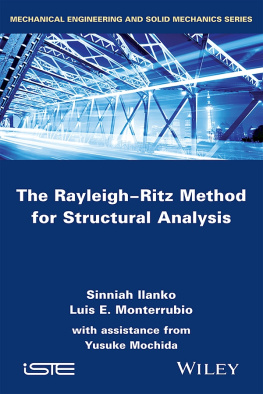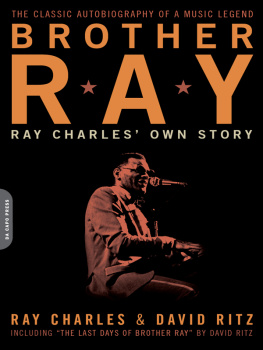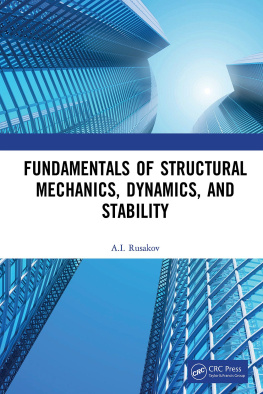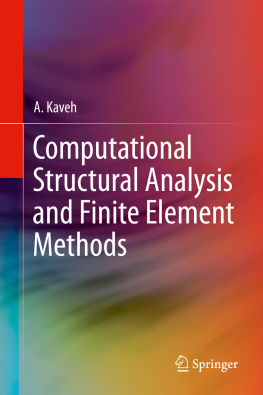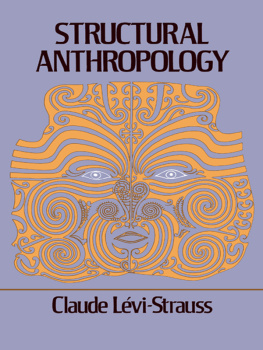Ilanko - The Rayleigh-Ritz Method for Structural Analysis
Here you can read online Ilanko - The Rayleigh-Ritz Method for Structural Analysis full text of the book (entire story) in english for free. Download pdf and epub, get meaning, cover and reviews about this ebook. year: 2015;2014, publisher: John Wiley & Sons, genre: Children. Description of the work, (preface) as well as reviews are available. Best literature library LitArk.com created for fans of good reading and offers a wide selection of genres:
Romance novel
Science fiction
Adventure
Detective
Science
History
Home and family
Prose
Art
Politics
Computer
Non-fiction
Religion
Business
Children
Humor
Choose a favorite category and find really read worthwhile books. Enjoy immersion in the world of imagination, feel the emotions of the characters or learn something new for yourself, make an fascinating discovery.
The Rayleigh-Ritz Method for Structural Analysis: summary, description and annotation
We offer to read an annotation, description, summary or preface (depends on what the author of the book "The Rayleigh-Ritz Method for Structural Analysis" wrote himself). If you haven't found the necessary information about the book — write in the comments, we will try to find it.
Ilanko: author's other books
Who wrote The Rayleigh-Ritz Method for Structural Analysis? Find out the surname, the name of the author of the book and a list of all author's works by series.
The Rayleigh-Ritz Method for Structural Analysis — read online for free the complete book (whole text) full work
Below is the text of the book, divided by pages. System saving the place of the last page read, allows you to conveniently read the book "The Rayleigh-Ritz Method for Structural Analysis" online for free, without having to search again every time where you left off. Put a bookmark, and you can go to the page where you finished reading at any time.
Font size:
Interval:
Bookmark:

To my late parents Saraswathyppillai and Sinniah, my late brother Senthinathan who encouraged and supported me during my studies at Manchester, my brothers Kumarabharathy, Kathirgamanathan, sister Sooriyakumari, my wife Krshnanandi, daughters Kavitha and Tehnuka, my in-laws, nephews, nieces, my supervisors Emeritus Professor Dickinson, the late Dr Tillman, my teachers from my old schools in Sri Lanka (Veemankamam Mahavithiyalaym, Mahajana College, Tellippalai), and all my lecturers and students, and colleagues both current and past.
Sinniah Ilanko
To my wife and son.
Luis Monterrubio

First published 2014 in Great Britain and the United States by ISTE Ltd and John Wiley & Sons, Inc.
Apart from any fair dealing for the purposes of research or private study, or criticism or review, as permitted under the Copyright, Designs and Patents Act 1988, this publication may only be reproduced, stored or transmitted, in any form or by any means, with the prior permission in writing of the publishers, or in the case of reprographic reproduction in accordance with the terms and licenses issued by the CLA. Enquiries concerning reproduction outside these terms should be sent to the publishers at the undermentioned address:
ISTE Ltd
27-37 St Georges Road
London SW19 4EU
UK
www.iste.co.uk
John Wiley & Sons, Inc.
111 River Street
Hoboken, NJ 07030
USA
www.wiley.com
ISTE Ltd 2014
The rights of Sinniah Ilanko and Luis E. Monterrubio to be identified as the authors of this work have been asserted by them in accordance with the Copyright, Designs and Patents Act 1988.
Library of Congress Control Number: 2014953191
British Library Cataloguing-in-Publication Data
A CIP record for this book is available from the British Library
ISBN 978-1-84821-638-9
It is a privilege to have the opportunity to share with you some of our interesting experience in the journey of learning and research about structural analysis. The specific path we are exploring here is a superhighway a variational technique called the RayleighRitz method or the Ritz method. I was introduced to this method during my PhD studies by an excellent supervisor, Professor Stuart Dickinson at the University of Western Ontario. Prior to this, another excellent supervisor (my BSc and MSc supervisor), the late Dr Stuart Tillman (University of Manchester), had taught me the Lagrangian multiplier method. Dr Tillmans lectures were such that one has only to listen once from then on the material stays crystal clear. So the reason I became interested in these techniques (other than the fact that they are very handy for vibration analysis which was my research area) is perhaps the passion that my teachers showed in the subject.
The thought of writing a book in vibration occurred to me after my first study leave in India where I received some positive feedback after giving a public lecture on Vibration and Stability of Structures that was meant to be for a general audience. I tried hard to think of ways of explaining concepts such as natural frequency, stiffness, mass, damping where possible using everyday experiences and analogies. While such analogies may not be accurate, they help to create an image and this technique has since helped me to score some points with my students. For example, I explain natural frequencies as the frequencies at which a structure is easily excitable and give as an example the frequency at which one should meet with a potential partner or friend to sustain the relationship. If we meet too frequently, we may not give our friends enough space and scare them; if do not meet often enough, we may wrongly signal that we are not interested in them. So to get the maximum response, we need to engage at the right frequency. The same goes with structures. I have always wanted to share such thoughts through a book.
The opportunity to write a book has finally come through an invitation from Professor Nol Challamel. The book is about the RayleighRitz method but as you will see, for historical reasons and for its common potential use, the focus is largely on natural frequencies and modes and the related problem of structural stability. I have tried to think of simple analogies to present this in an interesting way but have only managed to do this in one or two places. The book is a mixture of well-established material (both theory and application) and the result of our own research. An accidental mistake in the sign of an inertia term in an equation in my PhD thesis has led to the discovery that negative values of large magnitude for masses and stiffness can be used in modeling constraints. Dr Luis Monterrubio has utilized this idea for solving a number of different structural problems, and has come up with a nice set of admissible functions to use in the analysis of beams, plates, shells and solids in Cartesian coordinates and has contributed to Chapters 812. Dr Yusuke Mochida has helped with proofreading and checking the derivations. I am grateful to Luis, Yusuke, Professor Nol Challamel and ISTE for making this possible.
I must also record my thanks to my family, teachers, students and colleagues for my role as an author would not have been possible without them.
Some of our explanations, for example the use of analogies, may not be based on principles of science, or may be in subject areas such as management in which we do not have any expertize. While we have tried to eliminate errors, our attempts to continuously improve the manuscript with new examples and explanations may have led to some mistakes. We would be grateful to receive any comments, criticisms or suggestions for improvements regarding the contents of this book.
Sinniah ILANKO
October 2014
In many practical engineering problems, it is not possible or convenient to develop exact solutions. A convenient method for solving such problems originated from attempts to calculate natural frequencies and modes of structures. This method is known as the RayleighRitz method or the Ritz method [RAY 45a, RAY 45b, RIT 08, RIT 09, LEI 05, ILA 09, YOU 50]. In this book we will see how to apply this method for solving a variety of common problems engineers and scientists encounter. We will first provide some historical notes on the development of the method and show how the principle of conservation of energy leads to this procedure. Those who are keen to get on with the application may want to proceed to Chapter 3.
Chapter 1 starts with application of the principle of conservation of energy for a simple pendulum showing how the natural frequency can be found by applying this principle for a system that can vibrate only in one mode or shape. Such systems that can only vibrate in one mode are called single degree of freedom systems, as a single coordinate is sufficient to describe the actual shape of natural vibration and such a natural vibration without any external dynamic force takes place only at one frequency which is its natural frequency. Then we consider a spring-mass vibratory system which has two independent coordinates. It can be easily shown, by applying Newtons second law of motion, that the system has two natural frequencies with associated modes. Application of the conservation of energy for this system requires an assumption about the shape of vibration. Although the natural frequencies and modes can be calculated conveniently by solving the equations of motion derived from Newtons second law, application of the principle of conservation energy shows that in this case this the application leads to one value for the frequency which depends on the assumed mode (the assumed ratio of the displacement of two masses) and takes minimum and maximum values when the assumed modes correspond to the actual first and second modes, yielding the respective natural frequencies. In Chapter 2, we proceed to show how this illustrates Rayleighs Principle which in Lord Rayleighs own words is stated as follows:
Next pageFont size:
Interval:
Bookmark:
Similar books «The Rayleigh-Ritz Method for Structural Analysis»
Look at similar books to The Rayleigh-Ritz Method for Structural Analysis. We have selected literature similar in name and meaning in the hope of providing readers with more options to find new, interesting, not yet read works.
Discussion, reviews of the book The Rayleigh-Ritz Method for Structural Analysis and just readers' own opinions. Leave your comments, write what you think about the work, its meaning or the main characters. Specify what exactly you liked and what you didn't like, and why you think so.

